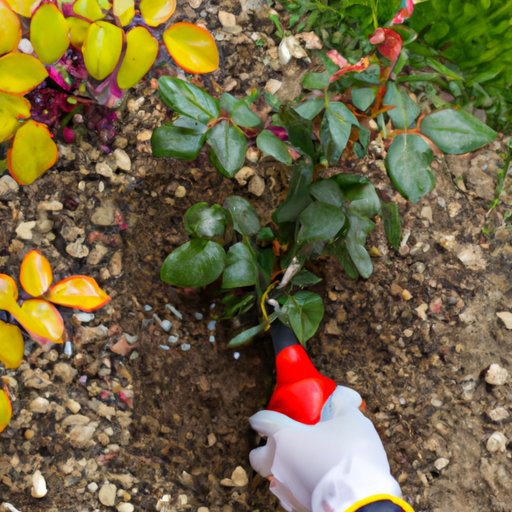Introduction
Roses are beautiful, fragrant flowers that can add color and life to any garden. They come in a variety of colors, shapes, and sizes, and they’re surprisingly easy to care for. With the right knowledge and supplies, you can have a beautiful rose garden in no time at all.
There are many different types of roses, including hybrid tea roses, climbing roses, shrub roses, and wild roses. Each type has different needs when it comes to proper care, so it’s important to choose the right variety for your garden. Once you’ve selected the right roses, you’ll need to provide them with the right environment, nutrition, and care.
Selecting the Right Variety of Rose
When selecting a variety of rose, it’s important to consider the climate and soil type of your area. Roses require well-draining soil and full sun for optimal growth. If your area is particularly hot and dry, choose a drought-tolerant variety of rose. Likewise, if you live in an area with cold winters, choose a variety that is hardy and can withstand colder temperatures.
It’s also important to consider the size of your garden when selecting a variety of rose. Climbing roses are ideal for larger gardens, while smaller varieties such as hybrid tea roses are better suited for smaller spaces. Be sure to select a variety that will thrive in your particular climate and soil type.
When planting roses, be sure to dig a hole that is twice as wide as the root ball and just as deep. Place the roots into the hole and fill with soil, making sure to tamp down around the base of the plant. Water thoroughly after planting and mulch around the base of the plant to help retain moisture.
Watering and Pruning
Roses require consistent and deep watering for optimal growth. Aim for about 1-2 inches of water per week, either from rain or supplemental irrigation. Make sure to water the roots directly instead of spraying the leaves, as this can cause fungal diseases. It’s also important to avoid over-watering, as this can lead to root rot.
Pruning is also essential for healthy rose growth. Prune your roses in late winter or early spring, before new growth begins. Remove any dead or diseased branches, and trim back any overly long canes. This will encourage new growth and help your roses stay healthy.
Nutrition for Roses
Roses need a balanced diet to stay healthy and vibrant. Fertilizer and compost are both excellent ways to provide extra nutrients to your roses. Apply a slow-release fertilizer once a month during the growing season, and add a layer of compost in the fall to replenish the soil.
If you prefer more natural methods of nourishing your roses, there are plenty of options. Coffee grounds, eggshells, banana peels, and wood ash are all great sources of nutrients for roses. Sprinkle these items around the base of your plants for a boost of nutrition.
Conclusion
Caring for roses doesn’t have to be complicated. With the right knowledge and supplies, you can give your roses the best possible care. Select the right variety for your climate and soil type, provide consistent and deep watering, and apply fertilizer and compost for extra nutrition.
By taking the time to properly care for your roses, you’ll be rewarded with beautiful blooms throughout the growing season. With regular pruning and the right nutrition, your roses will remain healthy and vibrant for years to come.


